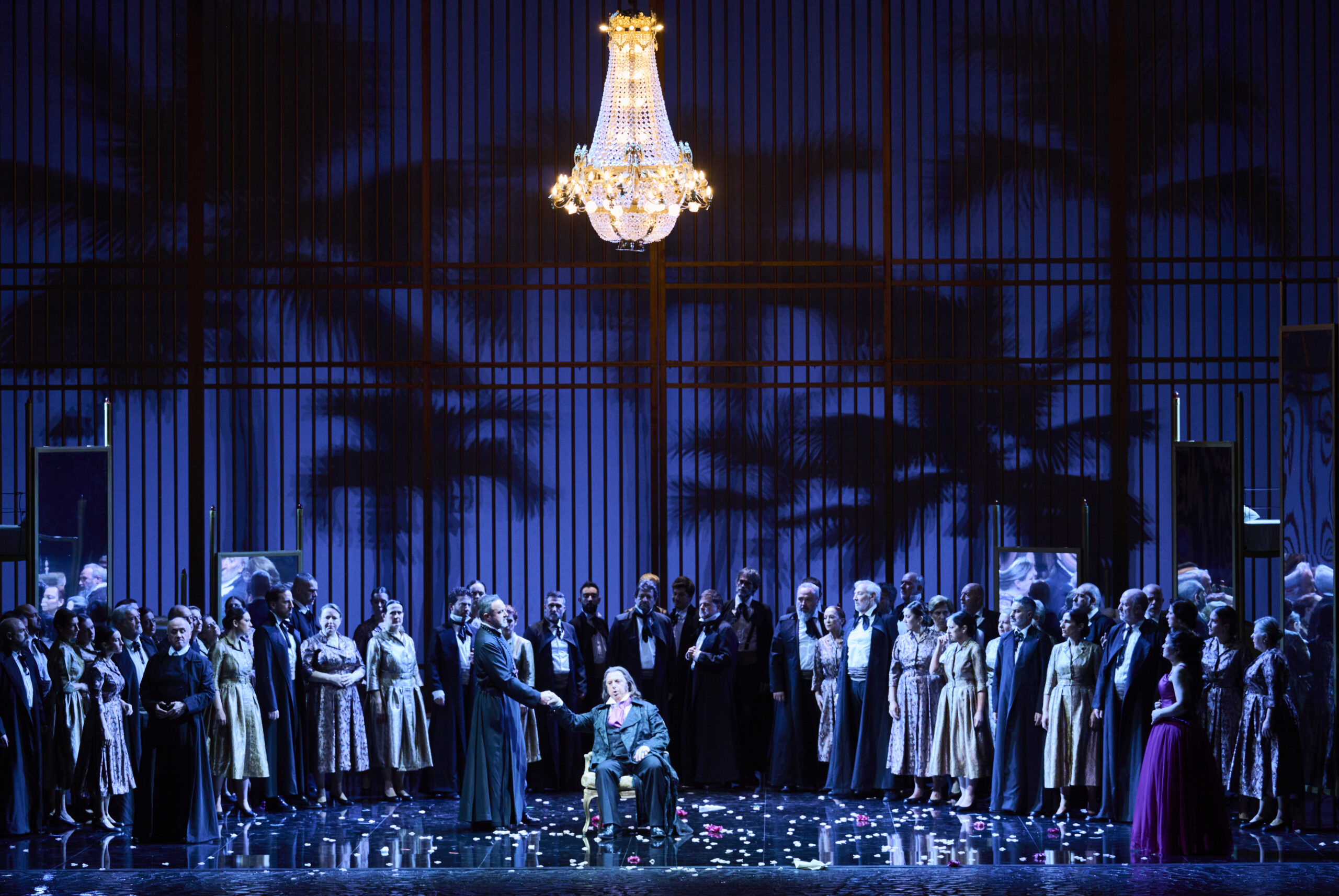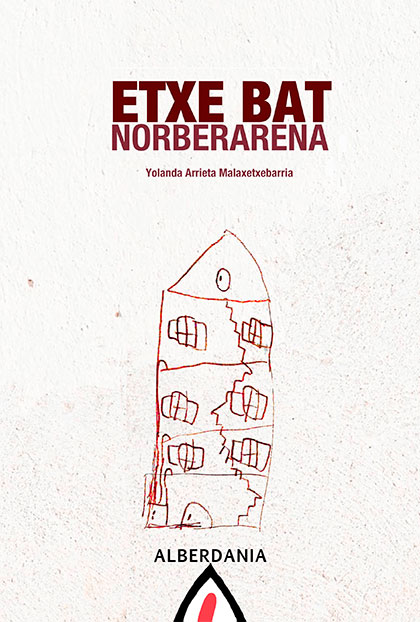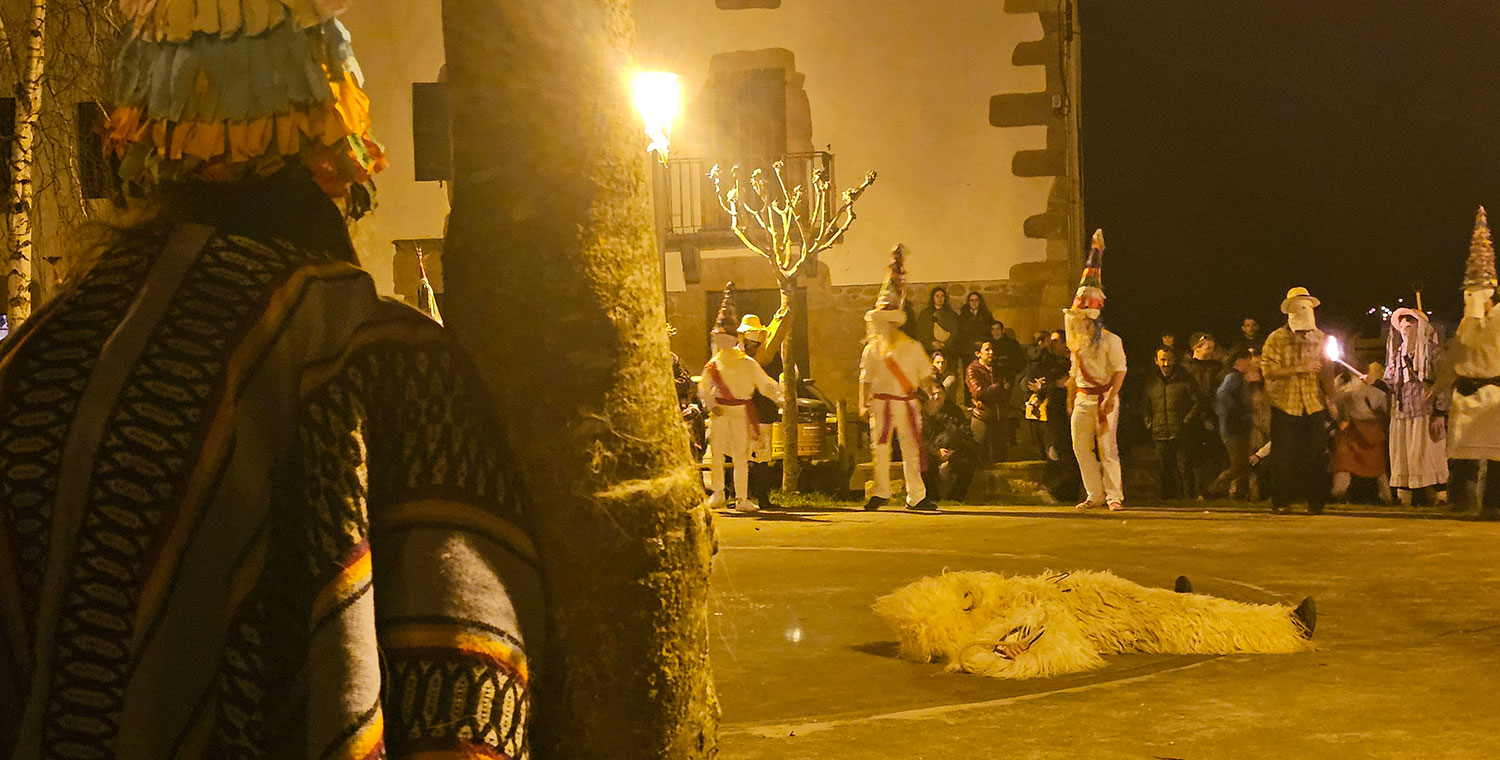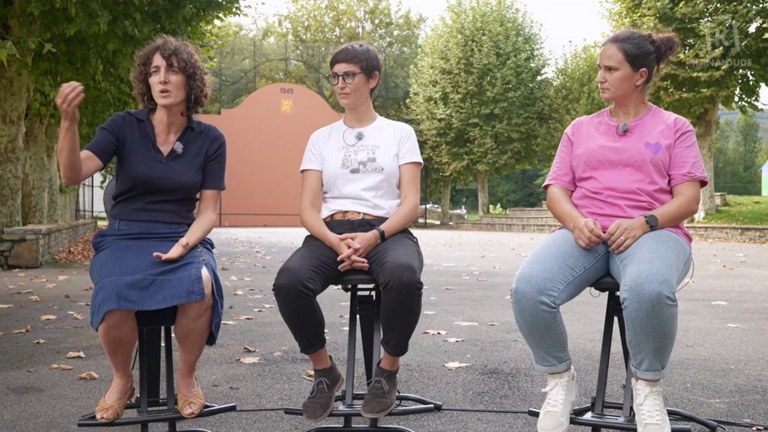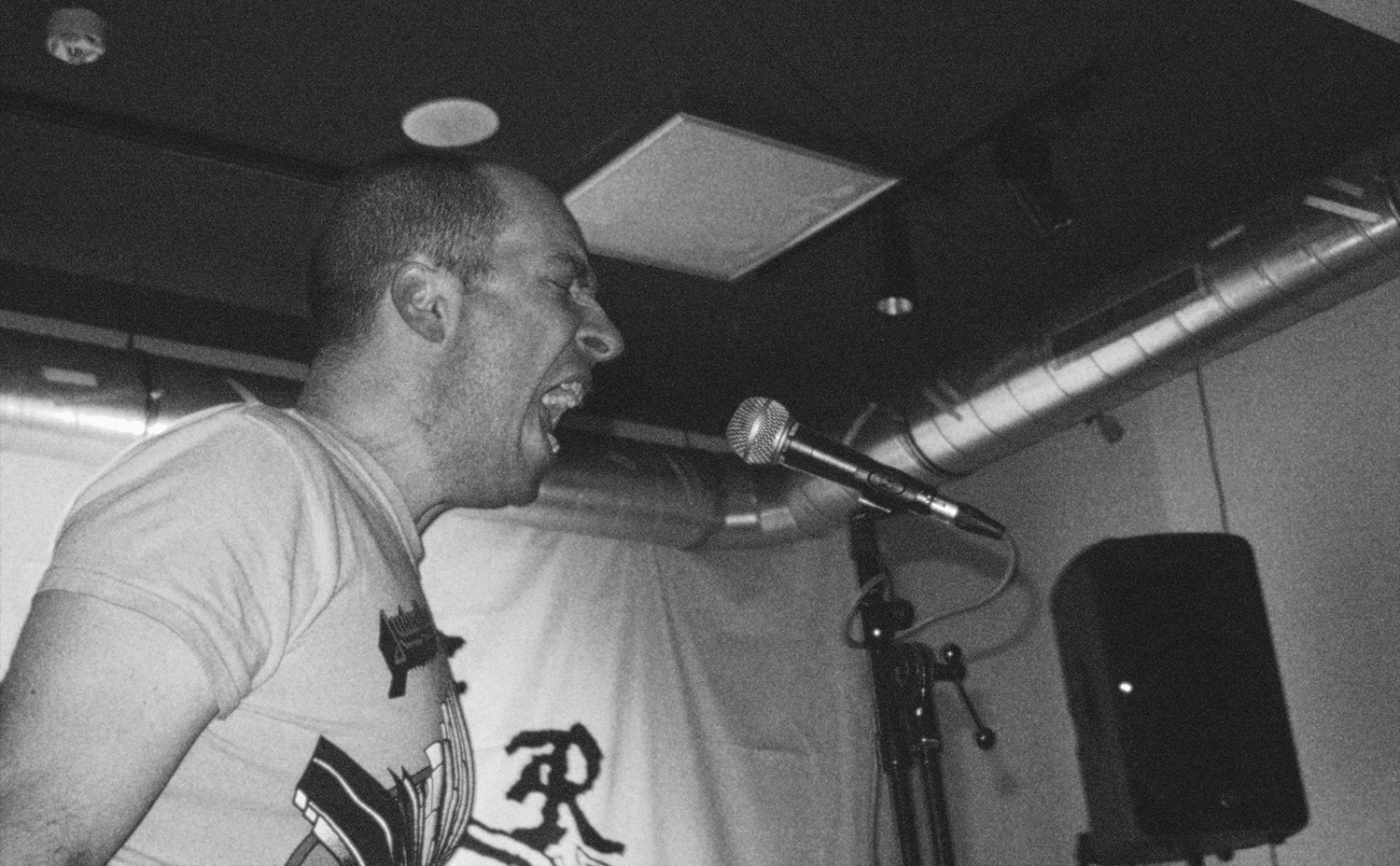"Is he a free artist or is he producing inside the market?"
- Ekida is presenting in recent months a building for a socialist art. They have not avoided buildings, but they are launching initiatives and reflections on brick to brick, art and culture. Works of art, debates and reflections will be articulated on the website, and a show of people in town, a Manifesto that combines poetry and singing, has also been organized. We are in the amphitheater of San Sebastian. In empty space for art, which is only filled with shows, a couple of times a year. In it we interviewed Nagore Arzallus Alustiza (Errezil, 1993) and Paul Beitia Ariznabarreta (Getaria, 1997), members of a generation educated in a continuing economic crisis; following the tradition of Bertolt Brecht, Mrs A and Mr B onwards.

Where has Ekida left?
A: The genesis of this entity must be framed within the Socialist Movement that has developed in the Basque Country in recent years. The desire to transform the capitalist ensemble has brought with it different aspects and problems of society from the perspective of socialist tradition. And also the desire to analyze the role of art and culture in a socialist policy. We believe that workers are also culturally uprising. For example, given the enormous evolution of the cultural industry of our time, we do not have any mechanism to cope with its impact on our lives. Faced with the absolute hegemony of capitalism, we believe that workers must also organize themselves independently in the field of culture.
They talk about breaking the apathy of the art world. What is the situation you see today in Basque Country?
B: We are reflecting on the relationship between art and political movements and socialist politics. All art is political, but we are particularly interested when that link is conscious. The dynamics that have existed in the art world for decades have moved away from this conscious political bond, also in Euskal Herria. The trend of the commodification of art has prevailed, and one of its expressions is that artists seek to make their own art, often from a very individual and personal perspective. We are in the time of the historic failure of the workers’ revolutionary movement. As a result, society has dominated depoliticization and individualism, which also influences art. I do not mean that social criticism is not seen, but we want to go further. Art has historically performed political functions for socialist politics, and we want to take it back from today and from here.
“A socialist art that responds to the communist worldview.” What defines art as socialist? Artists or artworks?
A: We understand art as a social process, so all its aspects must be taken into account: artists, works of art, but also receivers, technical works, etc. We understand by communist worldview the political culture of the revolutionary working class. It offers a framework for understanding and overcoming capitalist society, with a revolutionary ethic. Socialist art would be the aesthetic expression of this communist worldview and, in turn, a resource for the reproduction and dissemination of this revolutionary political culture.
Can the characteristics of a socialist art be defined in this respect?
B: We do not have to understand the Socialist in a nominal way. It is not a question of the artist being considered socialist or of calling his work socialist. If the name of socialist makes sense, it has to have a political sense, it has to be a socialist political function. That is why we understand socialist art as a broad concept, not linked to a discipline or a gender or to formal criteria, but to political criteria.
"Art has historically performed political functions for socialist politics, and that we would like to return from today and from here"
In Euskal Herria, most discourses focus on consumption, especially since the beginning of the pandemic: how much “culture is consumed” and how. Few talk about what is produced and how. But you talk about production.
A: We have talked about both production and consumption in the conditions of society. We see socialist art as something that needs to be organized. Because all art is organized, but responding to different interests. Currently, the art produced and consumed within capitalist society, insofar as it responds to the dynamics of society itself, will be organized in the logic of capital accumulation. For example, which people have access to culture and what kind of culture? We want to offer ways of building antagonistic art: an art that can perform ideological functions for socialist policy, which is not directed by economic benefit and personalist interests, but by collective will. And we believe that the only way to guarantee this is for the organization.
They stress the need for media criticism.
B: We have a big problem with criticism. Both artistic and political criticism. If there is something that can be called Basque Culture, it is not a harmonious paradise of unity, as it is often intended to be projected, as if we were all on the same boat. It is permeated by political conflicts, class struggles and ideological conflicts. There are many elements that make this criticism difficult, but that need and legitimacy is essential.
Capitalism turns everything into merchandise. Is art another commodity?
B: Hegemonic, yes. The production of goods is the essence of capitalism, which leads to all aspects of social life. Art, insofar as it is created on this social basis, is also a commodity. Most expressions work within this logic and affect those who want to act outside it, intentionally or involuntarily. Less and less important, for example, is artistic content – what musical turn a song has made or what formal innovation a novel means – and much more the number of listeners or readers and the economic benefits that this entails.
A: In Pandemia, a lot has been seen in what the legitimacy of art has been defined. Who has had the right to carry out his business? All “professionals”, that is, approved in the logic of the market.
.jpg)
This contradiction is evident to the artist who wants to live from art. Because living from art reproduces the commodification of art in every way. The performance of the artist’s work as a commodity will almost always condition the improvement of the artist’s working conditions.
B: The artist is consolidated as a salaried worker. The bohemian artist or poetisa inkluso, the son of Aristocratic parents, ends, who does not care to starve. The artist proclaims himself as a laborer, equating this “dignified life” with that of the “other workers”. But that is doubtful, especially in times of crisis. The contradictions were manifested with the theme of the cultural strike; if the artist is a wage worker, his production must be linked to the dynamics of surplus value and not necessarily to the social function. It even claims a kind of privilege for some artists, it seems that they perform a greater social function than any other worker... It is interesting, however, that trade union work has been stepped up to improve working conditions. But if we do not put the political direction in overcoming capitalism, we will always have the same problem.
In Euskal Herria there are spaces that comprise art beyond merchandise: theatre companies, self-managed record companies (BideHutsa or Mukuru, to name a few), gaztetxe networks...
B: They are interesting to respond to and collectively address some common artistic needs and interests. However, we would not like to be a discography or an editorial managed by the artists Ekida, which is very interesting, but what we would like to do is promote socialist art, an art that fulfills ideological functions for socialist politics and organize resources for it.
A: We understand the resources in the broadest sense: the Manifesto we have presented, the editorials, the contact between artists… But also encourage criticism and debate among artists.
Proletarian art has gained visibility in recent years in disseminating some minority discourses and practices. But the proletarian should not be confused with the socialist.
A: Yes, there is no art without culture. The proletariat has historically developed its artistic expressions based on its way of understanding and acting in its world. Trap can be a clear example of this. But we cannot equate proletarian art with socialist art. To the extent that proletarian culture is situated within capitalism, it can be reactionary and have negligible content: machista ideology, inability to think beyond the capitalist framework…
B: That is why we need to move away from a labour temptation and understand that workers are also the product of capitalism. The life of workers is not revolutionary in itself: our understanding, our conduct, capitalist society determine it. Socialist policy aims to overcome capitalist society and thereby our own status as workers. On that road, a socialist political culture must be developed.
"To the extent that proletarian culture is situated within capitalism, it can be reactionary and have negligible content: machista ideology, impossibility of thinking beyond the capitalist framework..."
The debate about compromised art is linked to the cutting-edge movements of the 20th century. Dadaists, situationists, futurists... They have had a direct relationship with the communist movements, although development is completely different. Is that what you have?
B: At first glance, avant-garde movements seem to be the farthest moves in society. They have to be contextualized, developed in a very concrete stage of class struggle, where the choice was between revolution or barbarism. Political and artistic modernization were linking, hence its relationship with the two strongest historical consciences, communism and fascism.
A: This development also has its contradictions. The creation of these artists and artistic movements in this social context is not a coincidence, but if we look at the time, it can be said that in many cases this revolutionary passion that existed artistically – the revolutionary content of the works, the radical discourse against academia and bourgeois discourse – was not devised in a revolutionary political project. This lack of direct connection, along with other factors, could explain how capitalist society assimilated these artistic practices.
B: Even the role of these radical movements in the modernization of capitalist society: the birth of ideology and postmodernist aesthetics, the birth of design... I would say that we have little of that. We understand that we have to build a free society with a political organization, and if all those artistic expressions were assimilated because those policies failed.
The debate on the independence of art was very present here. Has art within the Socialist Movement not been a danger dependent on the Party and confusing urgency and importance?
A: The funny thing is that the debate about the independence of art always comes out when we talk about a conscious political bond. And you don't talk about whether or not art has independence in a capitalist society. Is an artist free or is he producing on the market? When we talk about independence, then what are we talking about?
B: The artist's political commitment is not something imposed from outside. It is a socialist artist who voluntarily assumes his adherence to the political movement like any other, and thinks about it his work.
In Euskal Herria all generations return in one way or another to Ez dok Amairu. But there have also been other movements and contributions to political art. In the world of music, we have the Basque radical rock, the hardcore scene, let's say it out loud in the '90s ... How do you stand before them?
B: For us, these are areas that have to be worked on a great deal. In any case, Ekida does not make an aesthetic proposal, but a political and organizational proposal that allows the development of that socialist art. Ekida is not a group of artists like Ez Dok Amairu. It is an initiative to organise the work and to put the conditions for politicising these areas.
Maiatzaren 8an hasiko da Bizkaiko Bertsolari Txapelketako sailkapen fasea. Zortzi saio bikoitz jokatuko dira maiatzeko eguenetan. Sarrerak eskuragai daude bertsosarrerak.eus atarian.
2020. urteko udaberrian lorategigintzak eta ortugintzak hartutako balioa gogoan, aisialdi aktibitate eta ingurune naturalarekin lotura gisa. Terraza eta etxeko loreontzietan hasitako ekintzak hiriko ortuen nekazaritzan jarraitu du, behin itxialdia bareturik. Historian zehar... [+]
Aranzadi Zientzia Elkarteko Etnografia Sailaren zuzendari berria da Maite Errarte Zurutuza (Beasain, 1995), urrian Fermin Leizaolaren lekukoa hartu ondoren. Kultura materiala aztertzen jarraitzeko beharra azpimarratu du, gizartearen memoria eta bizimodu aldaketak erregistratzeko... [+]
Joan den urte hondarrean atera da L'affaire Ange Soleil, le dépeceur d'Aubervilliers (Ange Soleil afera, Aubervilliers-ko puskatzailea) eleberria, Christelle Lozère-k idatzia. Lozère da artearen historiako irakasle bakarra Antilletako... [+]
Azaroan estreinatu zuen bere lehenengo lana Nagore Tamayo dantzariak (Tolosa, 2000): Nondik abiatu inora izena du, eta Natalia Belén dantzariarekin batera gorpuztu du. Bere herrian egin dugu hitzordua, Zumardi Handian.
Eskultura grekoerromatarrek bere garaian zuten itxurak ez du zerikusirik gaurkoarekin. Erabilitako materiala ez zuten bistan uzten. Orain badakigu kolore biziz margotzen zituztela eta jantziak eta apaingarriak ere eransten zizkietela. Bada, Cecilie Brøns Harvard... [+]
Martxoaren 17an hasi eta hila bukatu bitartean, Literatura Plazara jaialdia egingo da Oiartzunen. Hirugarren urtez antolatu du egitasmoa 1545 argitaletxeak, bigarrenez bi asteko formatuan. "Literaturak plaza hartzea nahi dugu, partekatzen dugun zaletasuna ageri-agerian... [+]
FITXA
Zer: OLBEk antolatutako Gaetano Donizettiren ‘La favorite’ opera.
Nork: Euskadiko Orkestra Sinfonikoak (zuzendaria: Riccardo Frizza) eta Bilboko Operaren Abesbatzak (zuzendaria: Boris Dujin).
Noiz: otsailaren 18an.
Non: Bilboko Euskalduna Jauregian.
Etxe bat norberarena
Yolanda Arrieta
Alberdania, 2024
Gogotsu heldu diot irakurketari. Yolanda Arrietaren obra aski ezaguna zait eta iragan maiatzean argitaratu zuen proposamen honetan murgiltzeko tartea izan dut,... [+]
Zuberoako ohiturei buruzko bi liburu ditut gogoan. Batek XX. mendean aritu izan diren 180 dantzari eta soinulari aipatzen ditu. Haien artean, emakumezkorik ez da agertzen. Besteak, pastoralei egiten die errepasoa eta hor emakumeak aipatu aipatzen dira, baina omisio esanguratsuak... [+]
1984an ‘Bizitza Nola Badoan’ lehen poema liburua (Maiatz) argitaratu zuenetik hainbat poema-liburu, narrazio eta eleberri argitaratu ditu Itxaro Borda idazleak. 2024an argitaratu zuen azken lana, ‘Itzalen tektonika’ (SUSA), eta egunero zutabea idazten du... [+]
Olor
Noiz: martxoaren 9an.
Non: Bilboko Sarean espazioan.
---------------------------------------------------------
Esperantza. iz. Nahi edo desiratzen dena gertatuko delako edo lortuko delako uste ona.
Izen horixe jarri zion Jokin Azpiazu Carballo Olor ermuarrak bere... [+]


















